This is a hands-on review of the Fuji Finepix S5 Pro, a DSLR released back in 2007 that combines the best characteristics of negative film and DSLRs.
Included here is a dynamic range comparison between the S5, the Nikon D3 and Nikon D70.
BACKSTORY
I started taking photography seriously at the beginning of 2007. My wife and I just found out that we were having a baby. It was a time filled with joy, hope and anticipation. I wanted to capture memories of our growing family beautifully.
As I shopped for my first DSLR, I learned about the then-recently released Fujifilm FinePix S5 Pro. I read the glowing reviews about its colors and dynamic range. There were all sorts of stories about how this remarkable camera could capture images like no other. Here is one of those famous S5 shots:
The shot that made the S5 famous. Credit: Ryan Brenizer - blogged here.
FUJI S5 PRO
The S5 is basically a Nikon D200 with a customized Fuji-designed sensor. The S5 -- and its predecessor the S3 -- use Fuji's proprietary Super CCD sensor. Unlike other sensors, the Super CCD sensor has two pixels in each photosite. One of the pixels is like a regular CCD pixel. The second pixel is a much smaller pixel that has a much lower sensitivity. When the S5 takes a shot, the regular S-pixel records the image with the typical dynamic range of a CCD sensor. At the same time, the smaller R-pixel, with lower sensitivity, is able to record the highlights and brighter parts of the image. The information from both pixels is combined into an image that has a wider dynamic range than what would otherwise be possible. It's like the S5 takes two shots at the same time and combines them into an HDR image.
The other unique quality of the S5 is its colors -- specifically its skin tones, which many say is more flattering for lighter complexions than other cameras.
These advantages made the S5 the perfect camera for people photos, and it was precisely what I wanted. Unfortunately the S5 cost $1,899 then. I couldn't wrap my head around that number, considering that I was looking for a DSLR under $500. I sighed and mentally categorized the S5 as unobtanium.
Eventually, like all cameras, the price started to decline. But even as recently as a couple of years ago, it was still selling well above $1,000. At the time I upgraded to a Nikon D300 in early 2010, I did consider getting an S5. However, given the S5's limited resolution and older specs, I felt that spending that much money just to get the benefit of the extra dynamic range was a luxury I couldn't afford.
Fast forward to a few weeks ago. I felt it was time to upgrade and I sold my D300. While researching which camera to get, I checked S5 prices on a whim and found to my surprise that some were selling for much more reasonable prices. So, five years after pining for one, I finally got one. (Cue the Carpenters' "Make Believe It's Your First Time" lol ).
DYNAMIC RANGE
I tested the S5's recovery limits. As with the D3 and D70, I tested recovery from -5 stops below the camera's metered exposure to +5 stops above. Just for kicks, I also tested up to +10 stops above the metered exposure.
Here again is the test for the D70:
And the test for the D3:
And now the S5:
Note: for +8, +9 and +10, I only included black and white versions.
To me, the usable results for the S5 are between -4 stops to +5 stops (with the need to remove some magenta tints on highlights). This is significantly better than the range of an old DSLR like the D70 (-3 stops to +3 stops). It is not as good as the D3 in the shadows, but is better than the D3 in the highlights, so there is a net improvement of about 1 stop over the useful range of the D3 (-5 stops to +3 stops). The S5's 2-stop highlight advantage makes sense because Fuji claims that the Super CCD sensor's R-pixels increases dynamic range to 400%. Interestingly, both the D70 and D3 completely lose highlight detail above 3 stops, whereas the S5 manages to retain detail (but not color accuracy) up to +7 stops. Indeed, at least one S5 user has been able to recover seemingly all color (with the need for some correction) at up to +6 stops.
PRACTICAL ADVANTAGES OF THE S5
You may be wondering: the S5's highlight range is amazing but you have to be a really terrible photographer to overexpose by THAT much. Is the S5 only for incompetent photographers? Is there any practical use for the S5's unique abilities? I thought about this and came up with real world advantages of the S5 (with some overlap). Here they are:
1. Correcting overexposure. I can make mistakes with exposure (ambient or flash) in the heat of the moment. It's nice to know that with the S5, those mistakes are probably recoverable, particularly for shots where there are no second chances.
2. JPEG shooting. The S5's JPEG files are unlike other JPEG files. They have about the same exposure latitude as the Nikon D70's raw files.
 |
| JPEG recovery from -3 stops |
 |
| JPEG recovery from +3 stops |
3. Raw editing. If you like having complete control of the image and prefer to work with raw files, then the S5 provides immense (perhaps unparalleled) latitude with exposure adjustments, whether for correction or creative purposes.
.
4. Can shoot like negative film. Because of the S5's exposure latitude, particularly with highlights, you can shoot with it like negative film. If you want to shoot by exposing for the shadows without worrying about blowing highlights, just like negative film, you'll appreciate the S5.
Here's one shot where I got noise-free detail in the shadows by exposing for the ground (which consisted of black rubber tire fill):
This was the unedited shot:
The SOOC shot (cropped)
In post, I merely pulled down highlights further and lifted the shadows to make the detail more apparent.
This is not to say that the S5's dynamic range is out of this world. It can't capture both the solar disc and the shadow of a black cat in a backlit cave in the same scene. Instead I would say it's close to what I can observe with my eyes. If I can see it without squinting, it's very likely within the range of the S5.
6. HDR in motion. The S5 combines information from two sets of pixels, almost like taking two shots at the same time at exposures that are two stops apart. That may not seem like much, but unlike typical HDR shots, you have the ability to take HDR shots of moving subjects.
7. Wide angle shots and sky shots. If you like using ultrawide angle lenses, you know that the sky is often a significant portion of the frame (especially if the camera is tilted upward as is commonly done with UWA), so you don't want it to be just blown out. The S5 can help you retain color and detail in the sky while still having a workable exposure for the subject.
8. Photos of black and white subjects. Who really needs 5 stops highlight range? Isn't 3 stops (like that of the D3 and D70) more than enough? Let's take a look at what "3 stops" really means. It does not always mean 3 stops overexposure. If you look at the D3 or D70 recovery test at +3 overexposure, the parts that lost detail were the parts that were slightly brighter than middle gray, because at +3 stops overexposure those lighter areas were actually more than 3 stops above middle gray. So by 3 stops, we actually mean 3 stops above middle gray.
If your whole scene is middle gray, then yes you can overexpose with the D70 or D3 by 3 stops and still recover it. Great! But what if there's something lighter toned in your scene such as let's say... average Caucasian skin? At a normal exposure, that skin would be at around Zone VI, one stop above middle gray. Now your 3 stops latitude has been reduced for the skin -- instead of 3 stops, you can only recover 2 stops overexposure of the skin. Still no sweat so far.
But what if the subject is wearing a white dress that you wanted to look white (not gray)? The resulting exposure of the white dress would be higher, maybe 1.7 or 2 stops above middle gray. Now your 3-stop latitude has been reduced to 1 or 1.3 stops vis-a-vis that white dress.
Then what if it's a summer wedding, and there is direct sunlight on part of the white dress? That sunlit part would probably be at least one stop brighter than the rest of the dress. Now you are at the limit of your 3-stop latitude and if the sunlit part is significantly brighter, you would have spent all your 3-stop allowance and gotten 255, 255, 255. And all of this assumes that you were exposing correctly. We weren't even talking about overexposure yet.
But wait a minute, you say. If all you're capturing is a blonde bride in a white dress surrounded by snow, then you're fine - you just expose the scene as if middle gray (retaining detail) and push everything in post to the limits of the paper or screen. Yeah that would work unless of course in the rather "unlikely" scenario that your blonde bride is next to a groom in a black tux. hmmm.
With the S5 in the foregoing example, you could have a white dress that is partly sunlit up to 3 stops higher than the rest of the dress and still retain color and detail in the brightest highlights, while still capturing that detail in the groom's tux in Zone III (and shadows in Zone II). In fact if you don't need color information in the white dress' highlights, your latitude is up to 5 stops higher than the rest of the dress. That's why wedding photographers love(d?) the S5.
 |
| Black and white jacket, cloudless sky and black rubber tire fill in shade. Not a problem for the S5. |
Here is a demo snapshot of a house with white stucco in direct sunlight. You can still see the texture of the stucco (even without me pulling down any highlights) - feel free to click on the file and zoom at 100% view. In post all I did was crop it a bit, tweak the white balance slightly, lift the shadows, and increase the contrast. I didn't have to recover the highlights and although the white stucco was illuminated by sunlight, not a square inch of the house was blown out. In fact, the S5 still had room left in both shadow and highlight latitude, so I boosted the highlights a bit. And BTW this was the JPEG file (not raw).
10. Backlit subjects. Do you love taking backlit shots? I do. In terms of exposure backlit shots can be challenging because of the strong contrast. This is another situation that plays into the strengths of the S5.
11. Flashless photography. With a regular DSLR, I often use fill flash to lift shadows and reduce the dynamic range between the subject and a bright background. With the S5 it is possible to omit the fill flash, get a decent exposure on the subject and recover the overexposed background. Shooting without a flash allows me to work faster and not have to worry about making the direction, quality and color of the fill flash consistent with the existing light.
The original unedited shot:
The edited shot (lifted shadows, recovered highlights, increased contrast):
12. Underexposing the background. [Caution: this is only hypothetical - I haven't tried this out yet.]
There are cameras that have unlimited or very high sync speeds such as the Canon 1D and the Nikon D70 (or most point-and-shoots). They can be useful for deliberately underexposing the background for dramatic effect, then illuminating the subject with a flash. However, for these cameras, the limiting factor becomes the flash duration. For an SB-800 speedlight at full power, it's around 1/800. For an AlienBee B1600 at full power, that's around 1/640.
Where does the S5 fit in this? The S5 has a so-so sync speed of 1/250. However, it has 2 additional stops of highlight range. Assuming the subject is darker than the background, it should be possible to use the same flash power that you could use at a higher sync speed then pull down the background exposure.
Example: Let's say you have sunny-16 conditions. The exposure of the background at ISO 100 is f/16 and 1/125 (for simplicity). To underexpose the ambient by 2 stops, you need an exposure of ISO 100, f/32 at 1/125. If you could sync at 1/1000, then you could expose instead at ISO 100, f/11 at 1/1000. To illuminate the subject, you would then need a flash that has sufficient power and distance to give you f/11 at ISO 100 to underexpose the background by 2 stops.
With the S5, our sync speed is only 1/250, which means that to underexpose the ambient by 2 stops, we would normally need an exposure of ISO 100, f/22 at 1/250. Suppose however, that we nonetheless shoot at ISO 100, f/11, 1/250 and use a flash and distance that gives us f/11 at ISO 100. The background would come out normally exposed and thus have all the detail. In post, we could burn the background 2 stops. In fact, assuming there are Zone VII white clouds in the background, we could place them in Zone X (by exposing 3 stops higher) and still recover color and detail in post thanks to the S5's 5-stop highlight headroom. So we could instead shoot at ISO 100, f/4, 1/250 (resulting in a 3-stop overexposure), burn the background by 5 stops in post, and the background would appear 2 stops darker as we originally wanted. A flash that could put out f/4 at ISO 100 is not asking much at all, and the undemanding 1/250 sync speed allows us to use even slower flash duration strobes such as the White Lightning X3200.
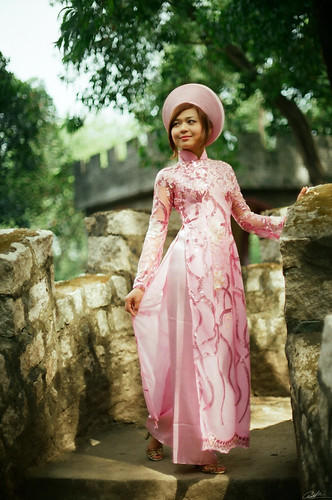 |
| Photo by Le Anh Khoa. Shot with Kodak 200 film. Note the amazing highlights. |
Here are a couple of S5 demo shots. In this shot, the sun is in the frame (albeit covered by the plants). If you look at the sky, you can see that it builds gradually to white, retaining detail all the way. You can also see this effect in some of the playground shots above.
At the 100% dynamic range setting (i.e. with the smaller pixels turned off), the S5 acts like any other DSLR. There are two issues with the sink. First, the right side of the sink that is being hit with the light is blown out. Second, the part where the sensor is able to record highlight detail stops abruptly before blowing out.
Post-processing adjustments (e.g. burning, pulling highlights, etc.) will not restore lost detail. Here I pulled down the highlights in LR4. The blown out patch is now a light gray, but still has no detail. Neither did the roll-off become any smoother. You can pinpoint exactly where the detail stops and the blown out area begins.
Here's what the sink looks like with the S5's maximum dynamic range activated. Even without editing, and even with my crappy office monitor, I can see that there was detail recorded everywhere in the sink, even in the patch that was directly lit by sunlight. Perhaps less evident but just as important, the transition to peak highlight is very gradual.
In post, I pulled down the highlights to make the tonality a little more obvious. You can see that the tones built up very gradually, just like negative film. The effect on this particular subject is that it revealed the delicate contour of the sink with finesse.
14. Skin tones. This one is more subjective. There's something about the way the S5 renders skin tones that is not 'neutral' but which many people find more pleasant. It's not easy for me to articulate it, but the best way I can describe it is that the skin tone looks like the hues I usually see on foundation for makeup (before it is applied).
Here is a shot from the Nikon D3, which to me has skin tones that look the most natural among all the cameras I've used.
And here's another set.
(On the second set, S5's on top, D3's at the bottom.)
FUJI S5 IDIOSYNCRASIES
The S5 is not perfect and has some issues.
1. Speed (or lack thereof). The biggest weakness of the S5 is that it is a relatively slow camera. Very low frame rate in continuous shooting, the buffer fills up quickly, and takes a while to empty. This is not a sports camera, and you can't just keep pressing the shutter thoughtlessly. [I guess it really is like shooting with a film camera. :) ] If you tend to pick your shots rather than spray-and-pray, it is not a big deal.
2. Resolution. It is true that the S5 has 12 million pixels, but the information from the second set of 6 million pixels is used together with those of the first set of 6 million pixels, therefore the real resolution is closer to 6 megapixels. I don't mind -- 6mp is enough for me to print 12'x18' without any problem. However, raw files have a resolution of 12mp. Since the 12mp resolution is mostly just through interpolation, it is far less detailed than a real 12mp file. I wish Fuji just kept it at 6mp. Or even better, I wish Fuji makes a successor to the S5 that has real 12mp.
3. Handling. One of the S5's quirks is its handling. Its ergonomics are great - it is physically identical to the Nikon D200 after all. It also shares with the D200 the ability to change many settings without going through the menus by pressing a button and turning the front or rear dial.
However, the S5's menu system is completely different from Nikon's. That's too bad because one of the things I like with my Nikon DSLRs is the intuitive interface. Unfortunately the S5's system is nowhere near as elegant as Nikon's, and the S5 has gotten a lot of criticism for it from Nikon users, particularly with the cumbersome playback controls. In my opinion, however, the menu is usable once you become familiar with its quirks. I certainly can't fly through the options the way I do with my other Nikons. But using the S5 is only slightly harder than using a camera from a different manufacturer. Seen that way, it's a bit less frustrating.
4. File sizes. Raw files with extended dynamic range are around 25MB each, whether you use 125% or 400% dynamic range. If you use only 100% dynamic range it doesn't take up as much space but the S5's advantages over other cameras disappear.
5. Exposure weirdness. The S5 has a couple of exposure-related weirdness. First, its metered matrix exposure tends to underexpose especially when there are bright highlights in the scene. This is particularly strange because it fails to take advantage of the S5's highlight headroom. I tend to get better results either by applying a +0.7 or +1 exposure compensation or by using center-weighted metering.
Another weird characteristic of the S5 is that when automatic exposure modes are used (P, A, S) shutter speeds can show up in strange fractions. For example, before pressing the shutter you might see that the shutter speed in P mode is at 1/60, but when you shoot it might be 1/60 or it might be 1/55.
6. High ISO Noise. By today's standards, the S5's high ISO noise is not impressive. I would say that ISO 1600 is usable.
7. Film modes. One of the S5's features is that it has film emulation modes. My problem with those modes is that you can't control the dynamic range. Each film mode has its own dynamic range setting.
8. Postprocessing. Although SOOC JPEGs from the S5 can look fine, the S5 really benefits from postprocessing. First, at maximum dynamic range, unedited images can appear flat. Proper post-processing brings back the contrast while preserving the dynamic range that you captured.
Second, if you really want to squeeze the most out of the sensor, in my opinion you need to post-process the file, otherwise the highlight detail is there but difficult to observe -- as shown in the porcelain sink example. (That's why if you read Ken Rockwell's review of the S5, he claims that the increased dynamic range is "invisible" -- Ken doesn't like postprocessing.)
9. File format. The .RAF raw files from the S5 can be converted into DNG in Lightroom without loss of any information or dynamic range. As a bonus, the file size is reduced from 25MB to less than 14MB.
One quirk of S5 raw files (whether RAF or DNG) in Lightroom is that the render previews take longer than usual to load. In addition, they can sometimes show weird artifacts or posterization -- even though the file doesn't have any actual artifacts or posterization problems. The render artifacts disappear when a 1:1 render preview is made.
SUMMARY
The S5 had been the undisputed leader in dynamic range when it was released in 2007 but two camera generations later, some cameras have caught up with (or even possibly exceeded) the S5's total dynamic range. Nonetheless, the S5's highlight range remains unsurpassed. The S5's extreme highlight range and nonlinear response allow it to function and provide shots like a camera with negative film, with tremendous exposure latitude and a very smooth highlight roll-off. The result is an image that, in my opinion, comes closest to the look of film, a quality that is not necessarily reflected in numbers about total dynamic range, resolution or high ISO noise.
Update: FUJI S5 VS. NEWER CAMERAS
There are now cameras that have greater total dynamic range than the S5. One could argue that even though the S5 has unparalleled highlight range, a newer camera with greater total DR can match that highlight range if it is sufficiently underexposed (and the shadows are enhanced in post-processing). I did exactly that in a comparison between S5 and D90. See here. You can decide for yourself whether the D90 adequately matched the S5.
FUJI S5 RESOURCES
Other S5 Reviews:
Other S5 dynamic range comparisons:
- S5 vs D3x
- S5 vs D700 (and a comment from a D300, D700 and S5 user)
- S5 vs D200
Here are some of my favorite S5 shots and galleries:
Leeisaku - note the skin tones in his portraits (as far as I can tell, they're all with the S5)
"On the Stairs" by AJT Images. I love the dynamic range and the detail captured in the dress.
"Stern Lil' Lola" by Denyer - I like the subtle range of highlight tones captured in the model's face.
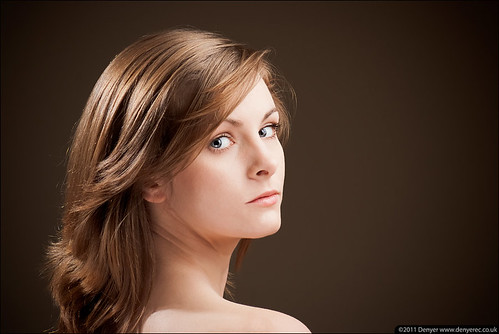
"At the arcade" by Alex Brown. I love the skin tone, delicate tonality, and the detail in the hat. If you told me this was shot with film, I would have believed you (perhaps Kodak Portra?).
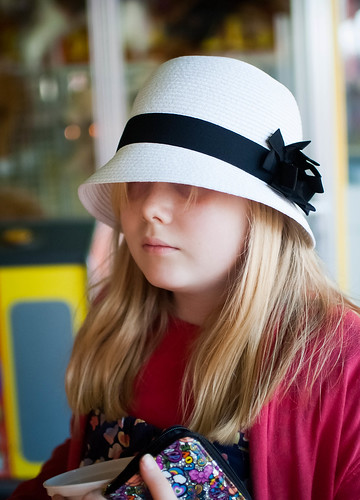
"Rivert y sus ventanas" by Cristina Perea. That shaft of sunlight there isn't blown out.
"tuxedo park Ny" by SKGPhotos. Nice showcase of the S5's highlight range.
RELATED POSTS
Comparing Digital with Film: Dynamic Range
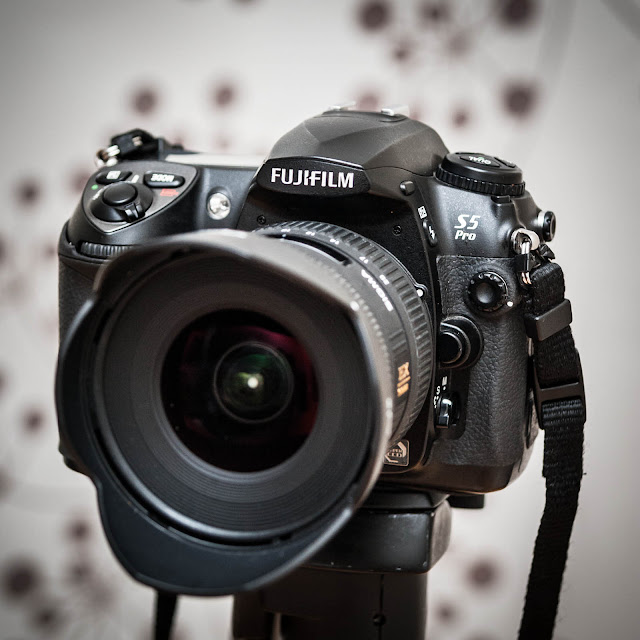
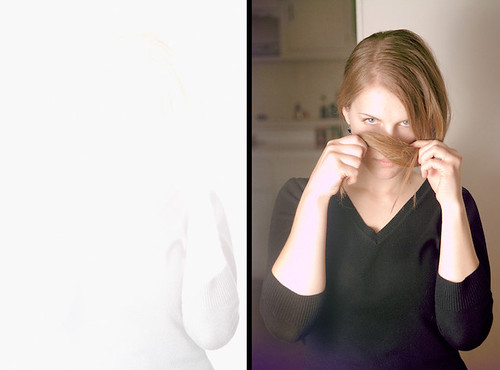







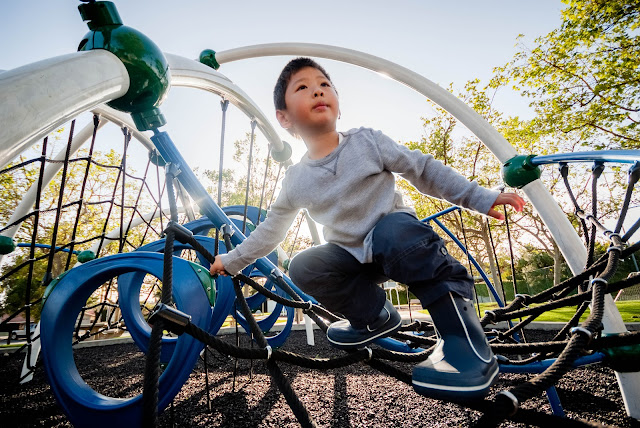












I like the review a lot, it is refreshing to read about something unique, I would love to see more impressions after you've used the camera for a longer period.
ReplyDeleteThanks my friend. Yeah I feel that it is really different. Early on, I thought about possibly trading it for a newer camera with really good high ISO performance but the more I learned about it, the more it seems that it is irreplaceable. We shall see... I have read former S5 users who have switched to the D700 or D3 who were initially wistful about the S5 but later thought the superior shadow range of the newer cameras made up for any loss.
ReplyDeleteBest regards,
Mic
Hi, I noticed the use of my Image "On the Stairs". If you were interested I can email you a copy of the file so you dont have to use a link. I also dont mind giving info on how the shot was captured (though I would appreciate a link to www.ajtimages.com if that is ok).
ReplyDeleteIm a big S5 fan myself despite initially buying the camera as it offered a fairly cheap body for a range of fast nikon lenses provided by the company I worked for. However I quickly grew to love the dynamic range and colours, though I still am loath to go abouve 400 iso and wish the output was sharper.
Anyway thanks for the nice words regarding my image
Alex Taylor
www.ajtimages.com
photos@ajtimages.com
Thanks Alex! That would be great. I'll send you an email.
DeleteBest regards,
Mic
Yep I agree with everything you have said and from the tests I have conducted. I have come to exactly the same conclusion... At present it is the only DSLR camera (in my opinion) ever made that is able to capture that amount of dynamic range. It really is remarkable camera, It's limitations like resolution, speed, noise can all be tackled by the use of the fastest card you can get and post production techniques. What I tend to do is turn every extra processing function either to minimum or off, such as, noise reduction is to minimum, sharpening is off etc but I use the maximum dynamic range as its this that is impossible to recreate. I then use the best photoshop plugins to remove noise and apply the sharpening once the image is at it's intended size. The results are just so much better than my backup camera (a nikon D5000) that even though the nikon is a really very good camera it's no where near as good as the fuji.
ReplyDeleteMy only caveat to my praise of the Fuji is the high ISO noise compared to modern high end cameras, if you intend to use this camera with a constant high ISO then this camera is not for you. Technology has moved on in leaps and bounds and the lack of noise of these new cameras is really good and it's here rather than the super high resolution or general speed that the Fuji is showing it's age, but if you were to ask me to swop the dynamic range for all the other advantages of the new DSLR then I would have to say no thanks I will keep the Fuji.... I just wished Fuji carried on with there SuperCCD in a pro DSLR body but it doesn't look like that will ever happen.
Max
Hi Max. My sentiments exactly.
DeleteIn fact in high ISOs the smaller s pixels are supposedly inactive, so we get a double whammy.
Best regards,
Mic
I also didnt like the film simulation modes because you cant control the dynamic range. When I asked about this, I was told that this is because different films have different amounts of dynamic range and so these differences are baked into the simulation modes. To be able to adjust that would sort of defeat the purpose.
ReplyDeleteSo film simulation modes are good for scenes where your camera does not need the use its maximum dynamic range.
Thanks, yeah, that's the reason I rarely use the film simulation modes which would otherwise have been more interesting.
DeleteWould you recommend using lightroom 4 or hyper utility o process raw files,?
ReplyDeleteHi! Sorry, I don't have hyper utility so I haven't compared it with lightroom...
DeleteBest regards,
Mic
Hi!
ReplyDeleteI the photographer of the last photo here ("At the arcade") and yes, that is a photo with pleasing tones. It was processed from RAW in LR 4.
I loved the S5 Pro but have since moved to a camera which I believe is a worthy successor - the Nikon D800. Even *more* dynamic range, though since it is weighted in the shadows it requires a different shot discipline to the S5 ...
- Alex.
Hi Alex! Thanks for the additional info on your photo, and congrats on the D800. A number of people have said the same thing - that the S5's dynamic range has been eclipsed by some of the newer cameras. I think it's great and it's definitely something to look forward to with my next camera (hopefully D600 ;) ).
DeleteMeanwhile I plan to test that with my lowly D90 (which supposedly had one of the widest dynamic range in the previous generation of APS-C cameras). My hypothesis is that even though the newer cameras have greater total dynamic range, the S5 is still unique because of the gradual rolloff. I think it will be interesting to test this.
Best regards,
Mic
Hi. Can you guys - based on your experience with S5 tell what prime lenses works well on S5 and which zooms? What cf card can you recommend for this camera?
ReplyDeleteThank you in advance.
BTW great blog..
Hi sznajder! Thanks for visiting our blog. Thank you also for your thought-provoking question. I like to answer based only on my personal experience so here goes:
DeleteIn my view the greatest strength of the S5 is the highlight dynamic range. For me, the lenses that I use that take advantage of this best are wide angle and ultrawide lenses (including fisheye). Examples that I like: Tokina 11-16 2.8, Tokina 10-17 fisheye, Sigma 10-20 4.0-5.6, or even the Tamron 17-50 VC.
On the other hand, one of the weaknesses of the S5 is the noise in high ISO, which is not as good as newer cameras. So, if you take photos in low light, you can benefit from lenses with wider apertures. Examples: Tokina 11-16 2.8, Tamron 17-50 2.8.
My suggestion is to take a look at the photos from the Flickr S5 group http://www.flickr.com/groups/fujis5/ then see which ones you like. Then check out what focal lengths they use. That would help you narrow down your choices.
As for CF cards, if you shoot in raw (I highly recommend doing so to take advantage of the dynamic range), then you should know that the S5 has huge raw files (around 25mb), so you'll need a large card. The S5 is also somewhat slow to write to the card, so I prefer to use a faster card so that I don't slow it down further. I've used Transcend 16GB 600x CF cards (the gold ones) and they haven't let me down.
Best regards,
Mic
Mic Ty,
ReplyDeleteI was wondering what firmware do you have installed on your S5? and have you compared with all the different firmwares?
Hi! I will check as soon as I get home.
DeleteBest regards,
Mic
I have not made tests with the latest firmware 1.12 but I've got the 1.09 installed on my S5. When using center weighted and matrix metering center weighted under exposes while matrix gives more accurate exposures.
ReplyDeletejust discussing firmware on the flickr forum most Pro users say that 1.09 is the best.
Thanks! That's helpful to know. I don't know yet which firmware I have, but whichever one it is, it tends to underexpose.
DeleteBest regards,
Mic
Please keep me posted on the firmware experiments.
ReplyDeleteThanks Mic
I found out that my firmware A is 1.01 and my firmware B is 1.08. I guess I have a chance to take some test shots with my older firmware, before upgrading to 1.09, then I will take the same test shots for comparison.
DeleteBest regards,
Mic
thanks for the update keep me posted
ReplyDeleteI've done some reading on the S5 flickr group page and got solid information from a member named "KopiOkaya". He seems to be an expert on the S5 Pro, he said his friend works at Fujifilm also he emailed me a download of the 1.09 firmware and I was able to downgrade from the latest 1.12 firmware.
ReplyDeleteI'm really enjoying your page on the S5 information and testing.
Thanks for your input Mic
Thanks for the info! I haven't been active in the S5 flickr group but I'll check it out.
DeleteBest regards,
Mic
I have an old S5 on the shelf and still use it for walkabout and street work. My day job is a photographer for which I use a D4/D700. The S5 is my personal "toy" for when photography is a hobby again. Interesting to see the different firmware thoughts, mine is on the ltest firmware and I tend to shoot raw and overexpose everything by a stop or 3 depending on what I want. I have tried different processing software and RPP for the mac is very good if you use good lenses. All best Si.
ReplyDeleteMic,
ReplyDeleteIm guessing you haven't done any test with the S5Pro?
Hi Frank. I assume you mean in comparison with the d7100? Not yet. Perhaps today.
ReplyDeleteBest regards,
Mic
Mic, I was reffering to the S5pro firewares...
DeletePlease go to www.flickr.com/photos/birdseyeviewphotos Then you will see why I use one for the day job being a Pro with 48 years of experience I am taking photos of car Insurance claims or accidents ....the Hassel 202FA is the other camera used.
ReplyDeleteThanks James! Nice portfolio you have there, if I may say so.
DeleteBest regards,
Mic